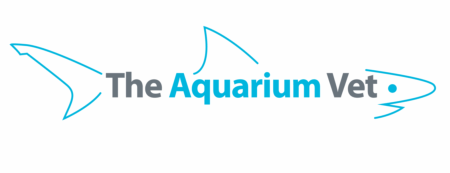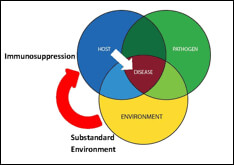Academy Contributors
Learning to Facilitate Change for the Better
 By James F. Gesualdi By James F. Gesualdi
Do the best you can until you know better. Then when you know better, do better.
—Maya Angelou
There are endless ways in which you and your organization can continuously enhance animal welfare. Right now. Today. Here are some simple and even enjoyable things you and your organization can do to get even better.
Forms, Policies, and Protocols
Advanced zoological organizations employ all sorts of forms, policies, and protocols with respect to important animal care, welfare, and safety matters. These are also subject to review by regulatory agencies like the U.S. Department of Agriculture Animal and Plant Health Inspection Service and are of particular interest in evaluating compliance and reviewing serious incidents. Given the significance of these documents, they should be reviewed, evaluated, and updated regularly—perhaps annually, but at least once every three years and possibly after serious incidents. Reviews should confirm that these documents are being used and implemented properly, and, if not, revisions and remedial training might be warranted.
Organizational review of forms, policies, and protocols is often conducted top down or by a selected group or individual. Reviews are a wonderful way to engage staff and draw upon their creativity and experiences. That is, learning from them on how forms, policies, and protocols relating to their daily responsibilities work in practice, and how they can be improved to the further benefit of the animals in their care. Larger zoological organizations, or ones with units responsible for different animals or species, could challenge each unit and other groups like veterinary, life support, and buildings and grounds teams to generate ideas for potential refinements. This helps everyone become more invested in ongoing improvement, which is ultimately good for the animals.
Extrinsic sources helpful in prompting and coordinating such reviews are: changes in regulations or agency guidance; revisions to professional standards and guidelines; new or updated husbandry manuals; and developments reported at conferences and in the professional and scientific literature.
Recordkeeping
Forms, policies, and protocols are an integral part of your recordkeeping. The Animal Welfare Act requires a good number of specific written records overall and with respect to certain species (e.g., environmental enrichment plan for non-human primates, veterinary justification for housing social marine mammal separately, written protocols, and other items). Of increasing importance are records that are not explicitly required under the AWA, but are essential for inspectors to determine compliance with broad outcome-oriented, performance-based regulations. For example, if an animal is injured by another animal, apparently because of incompatibility, the inspector will inquire about behavioral observations and related records showing careful monitoring and appropriate actions regarding compatibility. An absence of records or gaps in recordkeeping may prompt the inspector to cite a noncompliance regarding animal compatibility, because there was an unfortunate incident but there were little if any records to demonstrate an appropriate level of care and oversight.
Checking or spot-checking animal records and recordkeeping practices can be done anytime at no cost other than the staff time involved. Proactive, substantive review of select records may provide a broader and more complete picture concerning an animal or species, and could very well suggest new ideas for further enhancing animal welfare.
Enrichment
Enrichment is an important contributor to animal welfare. A few zoological organizations have true Animal Welfare Officers, and some have Enrichment Coordinators. Many organizations have thoughtful processes for the review, introduction, and evaluation of enrichment ideas and practices. Periodically taking stock of enrichment history records for individual animals and entire species can yield patterns and insights not readily evident when evaluating ideas or efforts on a case-by-case basis. Staff working with different animals or species could share their conclusions with others in internal roundtables, and brainstorm for breakthrough ideas (based on experience and familiarity with ongoing advances within the zoological community).
Professional Development
Professional development activities—via accrediting associations and professional organizations—are invaluable, for the individual and the organization, internally as well as externally. One of the best ways to demonstrate a commitment to continuous improvement in animal welfare and AWA compliance is to have a complete record of everyone's professional development activities, and a professional development calendar showing an abundance of internal and external learning and training opportunities. When fiscal challenges limit conference and travel opportunities, consider expanded use of online distance learning (including, of course, San Diego Zoo Global Academy's extensive catalog). When staff participates in outside activities, they should "teach" and share newly gained awareness with colleagues as another means of accelerating advances. It could even start off with a sharing session on "Here's what I learned last year that is worth sharing."
These ideas can be acted upon immediately and will consciously drive ongoing enhancements in animal welfare. We only need to examine these documents, records, practices, and experiences with the clear intent of utilizing them to grow professionally and organizationally—for our own betterment and the well-being of the animals we love.
© 2015 James F. Gesualdi, P.C. The opinions expressed herein are solely those of the author. This is not, nor should it be construed as, legal advice.
Please email me at jfg@excellencebeyondcompliance.com to share the good you are doing (as only you can), or with any comments or questions on this column or suggestions for future ones.
For upcoming workshops and sessions, contact info@excellencebeyondcompliance.com.

Something Fishy Is Going On
By Dr. Rob Jones, "The Aquarium Vet"
We have previously talked about the model developed by Snieszko, that disease results from the interplay of three factors: Host, Environment, and Pathogen. We have also examined how a substandard environment places fish under stress, leading to an increase in cortisol, which in turns causes immunosuppression, leading to an increase in disease and even death (see diagram).
What are these environmental factors? By far the most important is water quality. Maintain excellent water quality, and you prevent up to 90% of fish health problems. We covered water quality in the last newsletter. There are many other environmental factors that may also be involved. These include:
- Noise and Vibration — aquariums can be a noisy environment at the best of times with pumps and other equipment. Building maintenance or repairs can exacerbate the situation. Hammer drilling or jack hammering, in particular, are big concerns.
- Carbon Dioxide — poor ventilation above an aquarium can lead to an increase in CO2 levels, which will drop the pH of the water (due to the formation of carbonic acid). A lower pH is a stressor. At high levels, CO2 will also cause narcosis and even death.
- Stress of other fish — this can be either the same species (conspecific) or other species (heterospecific). There can be aggression between fish or even the fear of predation.
- Stocking level — many studies have shown that too high a stocking level causes stress. With some fish, a stocking level that is too low can similarly cause stress due to "bullying" issues. Keeping two or three of a particular fish species in a group can be a problem, with the non-dominant fish being harassed and chased, even to death. However, if you keep 20 of the same species in the same display, the aggression is dispersed and there are no problems.
- Photoperiod and Light levels — an ideal photoperiod is 12 hours light and 12 hours dark. Light timers that fail are common, causing 24 hours of light. I always recommend once a month a walk through a zoo or aquarium after hours to ensure that the lights have gone off. Similarly too bright a light level can be stressful on fish, depending on their natural habitat.
- Nutrition — poor-quality nutrition will always be a stressor. Buying cheap food is likely to be an expensive option in the long term as fish health suffers. Failure to add vitamin and mineral supplements can be another cause of problems.
- Capture and Handling — capture and the handling of fish are major stressors, with studies showing that cortisol levels can rise in less than 30 minutes. Always be as gentle as possible and use appropriate catching equipment for the species you are dealing with.
- Transport — on top of capture and handling, transport is invariably stressful. Maintaining good water quality and high dissolved oxygen (DO) levels is essential.
- Toxins (e.g. insecticides, herbicides) — in an outdoor facility, such sprays could run off after any rainfall into ponds and affect any aquatic inhabitants. While very unlikely in indoor aquariums, I have seen an issue with dying cockroaches (from a pesticide) falling into tanks and being eaten by the fish.
As you can see, there are many environmental issues to consider besides water quality. Sometimes there may even be two or three factors involved, so always keep an open mind and explore every possible cause if you are experiencing problems with your fish. The Aquarium Vet team wishes Academy members all the best for 2016.
Reference: Snieszko SF 1974, The effects of environmental stress on outbreaks of infectious diseases of fishes, J Fish Biol. 6, 197-208.
E-quarist™ Courses—Academy Subscriber Special!
The San Diego Zoo Global Academy is excited to share an additional Academy subscriber benefit regarding our collaboration with Dr. Jones: as an Academy subscriber, you are now entitled to a discount on the e-quarist™ courses. Module Six is now available — Nutrition and Reproduction.
For more information about the SDZGA discount, contact katrina@theaquariumvet.com.au
|